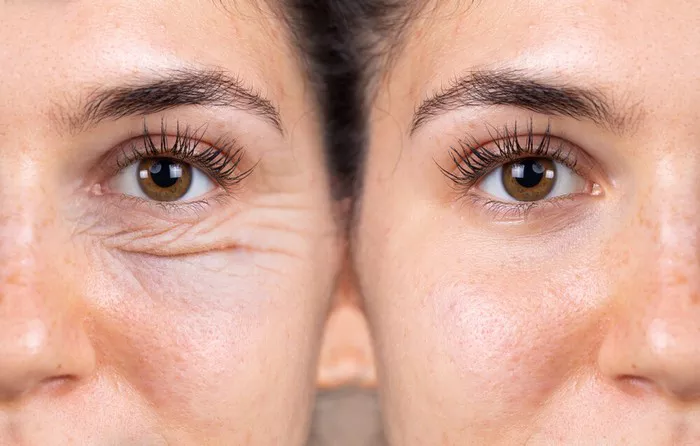Sagging skin on the face is a common concern as we age, influenced by factors such as collagen depletion, environmental stressors, and lifestyle choices. Fortunately, there are various strategies and interventions that can help address and fix sagging skin on the face. In this comprehensive guide, we explore the science behind facial skin aging and unveil effective methods for achieving a firmer and more youthful appearance without resorting to surgical procedures.
Understanding the Science of Facial Skin Aging
To effectively fix sagging skin on the face, it is crucial to comprehend the physiological changes that occur with aging. Collagen, a structural protein responsible for skin elasticity, naturally decreases over time. Additionally, the loss of subcutaneous fat and the weakening of facial muscles contribute to sagging and the formation of wrinkles. Understanding these processes lays the foundation for targeted interventions aimed at restoring firmness to the skin.
Adopting a Consistent Skincare Routine: The First Step to Fix Sagging Skin
An essential component of any strategy to fix sagging skin on the face is a comprehensive skincare routine. Cleansing, moisturizing, and using sunscreen are fundamental steps that promote overall skin health. However, to specifically address sagging, incorporating products with ingredients like retinoids, peptides, and hyaluronic acid is crucial. These ingredients have demonstrated efficacy in promoting collagen production, improving skin texture, and reducing the appearance of sagging.
Nourishing the Skin from Within: The Role of Nutrition in Skin Health
The quest to fix sagging skin on the face extends beyond external skincare to internal factors, with nutrition playing a pivotal role. A diet rich in antioxidants, vitamins, and essential fatty acids supports skin health and can contribute to a more youthful complexion. Foods such as fruits, vegetables, and fish provide nutrients that help combat oxidative stress and inflammation, both of which are associated with sagging skin. Hydration is equally vital, as adequate water intake helps maintain skin elasticity and suppleness.
Facial Exercises: Strengthening Muscles to Combat Sagging
Targeted facial exercises offer a non-invasive approach to fix sagging skin on the face by toning and strengthening underlying muscles. Exercises such as facial yoga, which involves specific movements and poses, can help improve muscle tone and reduce the appearance of sagging. Regular practice is key, as consistent engagement of facial muscles contributes to improved elasticity and firmness. While not a quick fix, incorporating facial exercises into a routine can be a proactive and natural way to address sagging skin.
Topical Treatments for Firmness: Creams and Serums
Advancements in skincare technology have led to the development of creams and serums designed to specifically target sagging skin on the face. Products containing ingredients like retinol, peptides, and growth factors work to stimulate collagen production and improve skin texture. Regular application of these topical treatments, as part of a skincare routine, can contribute to the overall firmness and resilience of the skin. Consulting with a dermatologist can help tailor a regimen to individual needs and skin types.
Non-Surgical Solutions: Dermal Fillers for Instant Lift
For those seeking immediate and noticeable results to fix sagging skin on the face without surgery, dermal fillers present a popular option. These injectable treatments, often containing hyaluronic acid, volumize and lift sagging areas, restoring a more youthful appearance. While temporary, dermal fillers provide a non-invasive alternative that can last several months. It is crucial to seek a qualified and experienced practitioner to ensure safe and precise administration.
Laser and Radiofrequency Therapies: Harnessing Technology for Skin Tightening
Advancements in cosmetic technology have introduced non-surgical treatments that utilize laser and radiofrequency energy to fix sagging skin on the face. These therapies stimulate collagen production and tighten loose skin, resulting in a more lifted and rejuvenated appearance. Fractional laser treatments, in particular, target specific areas with precision, minimizing downtime. As technology continues to evolve, these non-invasive approaches offer effective solutions for individuals looking to address sagging skin without resorting to surgery.
Ultherapy: Ultrasound Technology for Skin Lifting
Ultherapy, a non-invasive procedure that uses ultrasound technology, has gained popularity for its ability to lift and tighten sagging skin on the face and neck. This treatment stimulates collagen production deep within the skin, leading to gradual improvements in firmness and elasticity. Ultherapy is considered a safe and effective option for those seeking a non-surgical solution to address sagging skin. While results may take time to manifest, the gradual lifting effect is often appreciated by individuals who prefer a subtler transformation.
PRP Therapy: Harnessing the Power of Platelets for Facial Rejuvenation
Platelet-Rich Plasma (PRP) therapy is an innovative non-surgical approach to fix sagging skin on the face, harnessing the regenerative power of platelets found in the patient’s blood. In this procedure, a small amount of blood is drawn, processed to concentrate the platelets, and then reintroduced into the skin. PRP stimulates collagen production, promoting tissue regeneration and improving skin texture. As a natural and autologous treatment, PRP therapy has gained popularity for its potential to enhance facial firmness without surgery.
Combining Modalities for Optimal Results
The journey to fix sagging skin on the face often involves a combination of modalities to address various aspects of aging and skin laxity. Combining skincare routines, non-invasive treatments, and lifestyle adjustments allows for a holistic approach to achieving optimal results. Customizing these approaches based on individual needs and preferences ensures a comprehensive strategy that aligns with specific skin concerns. Consulting with skincare professionals and dermatologists can provide valuable guidance in creating a tailored plan for effective sagging skin management.
Conclusion
In conclusion, the desire to fix sagging skin on the face is a common aspiration, and advancements in skincare and cosmetic technology offer a range of non-surgical solutions. From targeted skincare routines and facial exercises to innovative treatments like dermal fillers, laser therapies, and ultrasound technology, individuals now have diverse options to achieve a firmer and more youthful complexion. By understanding the science behind sagging skin and exploring these non-invasive interventions, individuals can make informed choices that align with their preferences and contribute to a renewed sense of confidence in their appearance.

